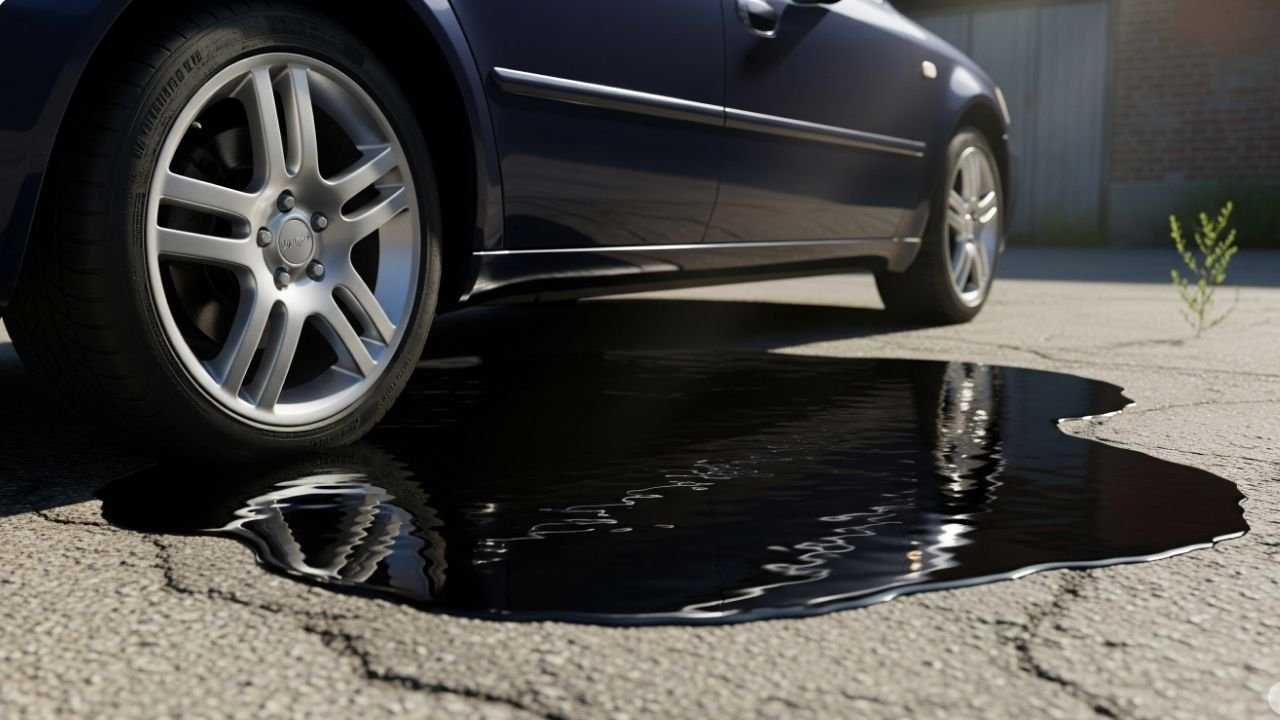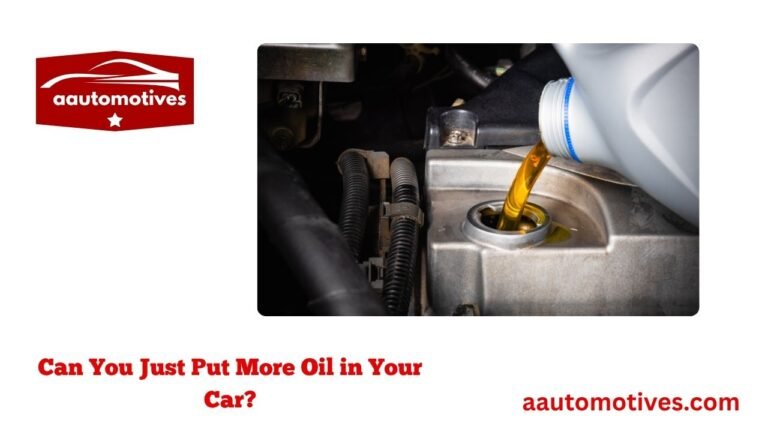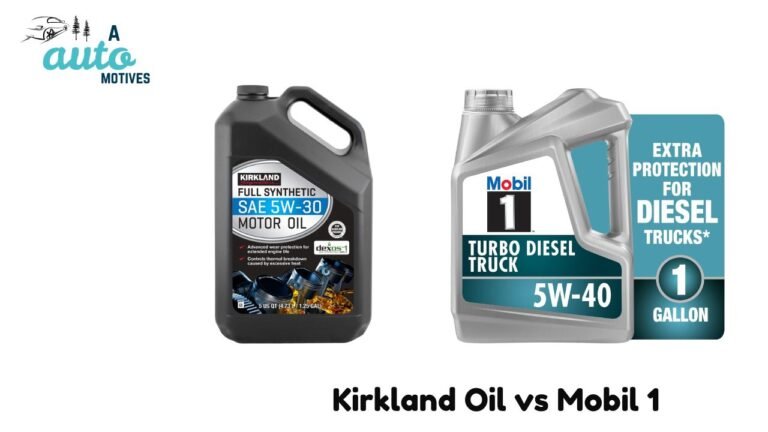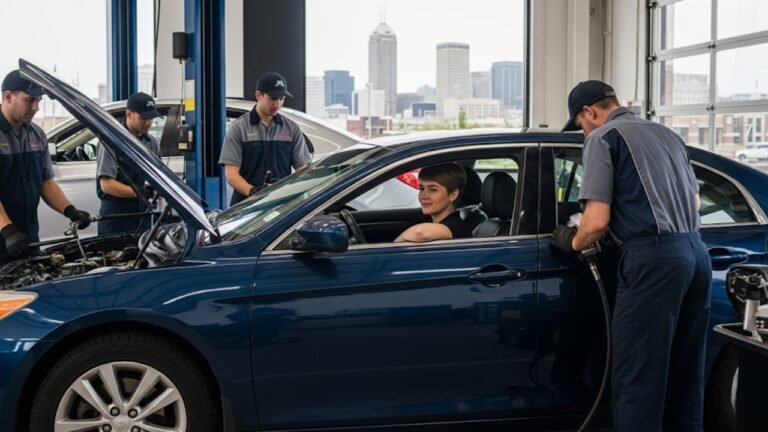Why Is My Car Leaking a Lot of Oil?

Let’s be honest. Few things are more frustrating than walking to your car, starting the engine, and spotting a dark puddle underneath. It’s not just any stain—it’s oil. That nasty, slick trail on your driveway can trigger instant worry. You might ask yourself: “Why is my car leaking a lot of oil?” Is it something minor, or is your engine crying for help?
I’ve been there myself. I remember one early morning before a long road trip, I noticed a wet patch right under the engine bay. At first, I ignored it. A few days later, my engine sounded rough. Turns out, I was losing oil faster than expected—and I paid the price with a hefty repair bill. That experience taught me a valuable lesson: Oil leaks are not just messy—they’re serious.
In this guide, we’ll break it all down. We’ll explore what causes major oil leaks, how to spot the warning signs, and most importantly—what you can do to stop it before damage takes over.
Why Oil Leaks Matter More Than You Think
Car oil is like the lifeblood of your engine. It lubricates moving parts, keeps the engine cool, and reduces friction. But when there’s a leak, that oil escapes. And when it does, the engine becomes vulnerable—to heat, friction, wear, and even total failure.
Let’s look at what oil leaks can lead to:
- Low oil levels that starve engine components
- Overheating, because oil no longer cools the engine effectively
- Engine seizures due to metal-on-metal contact
- Costly repairs or even complete engine replacement
That’s not even including the environmental damage, fire hazards, and nasty oil stains on your driveway. Long story short, ignoring an oil leak is like ignoring chest pain—it won’t fix itself, and it’ll only get worse.
Top Reasons Why Your Car Might Be Leaking a Lot of Oil
Now let’s dive deep into why is my car leaking a lot of oil. Below are the most common culprits—along with how each one affects your vehicle.
1. Worn Out or Damaged Gaskets
Gaskets seal different parts of your engine and help keep oil contained. Over time, they wear out or become brittle—especially in older vehicles or those exposed to extreme heat.
Common gaskets that fail include:
- Valve cover gasket
- Oil pan gasket
- Timing cover gasket
When these seals break down, oil seeps out and drips under your car. If you’re seeing a consistent leak, especially after driving, it might be time to inspect the gaskets.
2. Loose or Damaged Oil Filter
Your oil filter plays a key role in keeping your engine oil clean. But if it’s not tightened properly—or if it’s installed incorrectly—oil will leak right around it.
Also, cheap or poor-quality filters can crack under pressure. If your last oil change wasn’t done at a reputable shop, you might want to take a second look.
Tip: After every oil change, check for drips under your car for a couple of days. This can alert you to a filter or drain plug issue early on.
3. Leaking Oil Pan or Drain Plug
Your oil pan sits under the engine and holds all your engine oil. It has a small plug called a drain plug, which is removed when oil is changed. If that plug is:
- Overtightened
- Cross-threaded
- Or missing its sealing washer
…it can leak like crazy.
Also, hitting a pothole or rock can dent or crack your oil pan, causing major leaks. It’s often easy to spot—just get under your car and check for fresh oil on the pan.
4. Bad PCV Valve (Positive Crankcase Ventilation Valve)
Your PCV valve controls engine pressure. When it fails, it creates a pressure build-up inside the engine. That pressure needs to escape—and guess what? It finds its way out through the weakest seals, pushing oil out with it.
A faulty PCV valve won’t just make your engine leak—it could also affect your fuel economy, emissions, and engine performance.
5. Rear Main Seal Failure
This one’s a biggie.
The rear main seal is located between your engine and transmission. When it fails, it can leak a lot of oil, and it’s one of the hardest and most expensive seals to fix.
If you’re seeing oil leaking from the center or rear of the engine, and it’s a slow but steady drip, this might be the problem. Mechanics often need to remove the transmission to replace it, which is no small job.
Spotting the Signs of an Oil Leak
So, how do you know your car is leaking a lot of oil before it’s too late? Here’s what to look for.
Visible Oil Spots Under the Car
Fresh oil looks amber or light brown. Older oil appears black. Either way, dripping oil is a red flag.
Low Oil Warning Light
Your dashboard oil light might blink if the oil pressure drops. That’s your car’s way of saying, “I’m running dry!”
Burning Oil Smell
If oil leaks onto hot engine parts, it can burn and smell awful. That smokey, sharp scent is unmistakable.
Engine Overheating
Less oil = more friction = more heat. This may cause your temperature gauge to spike or trigger your cooling fan more often.
Blue Smoke from the Exhaust
If the leak reaches the combustion chamber, oil burns with fuel—creating blue exhaust smoke. That’s a sure sign something is seriously wrong.
Common Leak Sources & Fixes
| Leak Source | Symptoms | Estimated Fix Cost (USD) |
|---|---|---|
| Valve Cover Gasket | Oil near top of engine | $100 – $300 |
| Oil Pan Gasket | Puddle under engine | $150 – $400 |
| Oil Filter | Leak right after oil change | $20 – $50 (DIY) |
| Rear Main Seal | Heavy leak near transmission | $600 – $1,200 |
| PCV Valve | Oil leaks + poor engine running | $50 – $150 |
| Drain Plug | Drip from oil pan bolt | $10 – $30 (washer/plug |
What to Do If Your Car Is Leaking a Lot of Oil
If you’re wondering why is my car leaking a lot of oil, then taking quick action can save your engine—and your wallet. Here’s what you should do:
1. Don’t Panic, But Don’t Ignore It
A small leak might seem harmless, but they often get worse. Oil leaks don’t fix themselves. If ignored, the problem can grow from a $50 repair into a $1,000 disaster.
2. Check Oil Level
Use your dipstick to check oil levels. If it’s low, add the correct oil immediately—but remember, this is just a temporary fix. Find and fix the source.
3. Clean the Area to Find the Leak
Use a degreaser to clean your engine. Once it’s clean, run the engine and watch for fresh oil. This helps you pinpoint where it’s coming from.
4. Visit a Mechanic or Use Leak Detection Dye
If you can’t find the leak, many shops use UV dye to trace oil leaks. It’s a smart and cheap diagnostic method.
5. Avoid Driving Too Much Until Fixed
If the leak is bad, don’t drive. Topping off oil constantly is risky. Plus, hot oil on engine parts can catch fire.
How to Prevent Oil Leaks in the First Place
They say prevention is better than cure—and when it comes to car maintenance, this couldn’t be truer. If you’ve ever asked, “Why is my car leaking a lot of oil?”, the next question should be: “How can I stop it from happening again?”
Here’s what you can do to stay ahead of future oil leaks:
Stick to a Regular Oil Change Schedule
It might seem obvious, but many drivers skip or delay oil changes. Over time, old oil breaks down, creating sludge that wears out gaskets and seals. Follow your vehicle’s manual or change oil every 3,000 to 5,000 miles, depending on the type.
Use the Right Type of Oil
Some cars need synthetic oil, others don’t. Using the wrong oil can increase pressure or cause seals to swell, leading to leaks. Always double-check before topping up or changing oil.
Replace Gaskets at the First Sign of Trouble
If you spot oil sweating around the valve cover or oil pan, don’t wait. These early signs often grow into full-blown leaks. Replacing gaskets early can save major costs later.
Check Under the Car Regularly
Make it a habit to glance at your driveway or parking spot. Fresh oil spots are often your first warning.
Monitor Engine Temperature and Oil Pressure
If your temperature gauge spikes or oil pressure light blinks, don’t shrug it off. These are red flags that something’s off.
DIY Fix or Mechanic: When Should You Get Professional Help?
Some oil leaks are easy DIY fixes. Others? Not so much.
Let’s break it down:
You Can DIY If:
- The oil filter or drain plug is leaking
- You see visible drips and know how to safely access the part
- You’re comfortable working under your car and have tools
- The valve cover gasket is accessible (common in older cars)
You Should Visit a Mechanic If:
- The leak is coming from the rear main seal or timing cover
- The engine needs to be lifted or transmission removed
- There’s blue smoke or burning smell from the engine bay
- Oil is leaking into the cooling system (head gasket issues)
Also, if you’ve tried to fix it and the leak persists, it’s time for a pro.
FAQs: Why Is My Car Leaking a Lot of Oil?
Here are some common questions drivers ask when faced with oil leaks. Hopefully, these will clear up a few more things for you.
Q1. Is it safe to drive if my car is leaking oil?
A: Not really. Small leaks might not seem urgent, but they can quickly become dangerous. If the oil level drops too low, your engine can overheat or seize. It’s best to fix it before driving long distances.
Q2. How much does it cost to fix a major oil leak?
A: It depends on the source. A simple oil filter or plug issue might cost $20–$50, while a rear main seal repair could be $800–$1,200. Early detection usually means cheaper repairs.
Q3. Why does my car leak oil only when parked?
A: That’s usually due to gravity. When the engine is off, oil settles, and any weak seal or gasket can allow it to drip out. You’ll often notice this after overnight parking.
Q4. Can an oil leak cause engine damage?
A: Absolutely. Leaking oil leads to low lubrication, which causes metal parts to grind. It also reduces engine cooling and can eventually cause total engine failure.
Q5. Is oil leak repair covered under warranty?
A: If your car is still under powertrain warranty, some oil leaks may be covered. Always check with your dealership or manufacturer before paying out of pocket.
Q6. Will using stop-leak products work?
A: In minor leaks, yes. These products can temporarily swell seals and stop small drips. But they’re not permanent fixes, and won’t work for major leaks or cracked components.
Q7. How long can I drive with a small oil leak?
A: It depends on how small the leak is. You might drive for weeks without issue—but it’s risky. A sudden drop in oil level can damage the engine. Best practice? Fix it sooner rather than later.
Q8. Why does the oil leak come back even after a repair?
A: Sometimes, a new gasket is installed on a dirty surface, or there’s more than one leak. It’s also possible that engine pressure or a bad PCV valve is pushing oil past seals.
Personal Story: My $10 Mistake Turned $900 Disaster
Let me get real for a second.
A few years back, I did my own oil change. I reused the old drain plug washer—thinking it wasn’t a big deal. Well, a week later, oil was all over my driveway. I topped it off and drove anyway. Then, one day, the oil light blinked, the engine made a nasty ticking sound, and I had to call a tow truck.
Final bill? $900 for engine work.
What did I learn? Never cut corners. A small part can cause big problems.
Final Thoughts: Catch It Early, Save Big Later
If you’re asking, “Why is my car leaking a lot of oil?”, you’re not alone—and you’re asking the right question. Oil leaks may seem small, but they’re never harmless. Whether it’s a gasket, plug, or seal, every drop matters when it comes to your engine’s health.
Here’s your takeaway:
- Be observant: Look under your car and listen to how it drives.
- Act fast: A leak today can turn into engine damage tomorrow.
- Get help when needed: Not every fix needs a mechanic, but some do.
Your car is an investment. And just like your health, the earlier you address issues, the less painful (and costly) it will be in the long run.






